Searching for "learning"
New Teacher Advice – ‘Hold On To Your Optimism & Idealism’
http://mobile.edweek.org/c.jsp?cid=25920011&item=http%3A%2F%2Fapi.edweek.org%2Fv1%2Fblog%2F100%2F%3Fuuid%3D47397&cmp=soc-edit-tw-tm
Your job is to grow your students to become independent, self-directed learners not for someday in the distant future, but right now. Students deserve to have clarity on the following questions:
- Why do I have to learn this? What value is it to me?
- How will I be assessed?
- How will I be judged?
- How will I be supported during the learning experience?
From Books to Bytes: How Educational Technology is Engaging Students and Enhancing Learning
|
Sponsored By: VitalSource |
|
This presentation will begin on Tuesday, August 18, 2015 at 11:00 AM Pacific Daylight Time. |
http://event.on24.com/eventRegistration/EventLobbyServlet?target=lobby.jsp&eventid=1030139&sessionid=1&key=65FED8F873D5F1BF695F2E0D8A27ADCF&eventuserid=123437779
moderated by Linda Briggs
David Kent Director VOLSHOP (official bookstore) U of Tennessee, Knoxville
Lisa Kiefer, Managing Director Wakefield ResearchCindy Clarke Vice President Marketing, Vital Source Technologies
stats from presentation available here: http://web.stcloudstate.edu/informedia/blog/bytes_books.pdf or http://wcc.on24.com/event/10/30/13/9/rt/1/documents/slidepdf/vitalsource_campustechnologywebcast_finalslidedeck.pdf
methodology: 519 students from 4 years college and u/s
close to what keynote speaker at MN eSummit 2015 shared https://blog.stcloudstate.edu/ims/2015/07/29/mn-esummit-2015/ David Wiley, MN Learning Commons
students want formally taught life skills: interview for a job, balance checkbook and do taxes, how to take out and pay for student loans
Tennessee:
traditional 4 year school. cost is part of the program, not charged as a course fee. all materials avaiable first day of school and available in perpetuity. way below rental books prices. via LMS (BB). no printed textbooks. few books through websites, for books, which do not subscribe for the program. ebooks offered at the store. increasing titles selection. cost, learning outcomes. the outlook for digital in the future: already digital, but open for further development. expand courses offered, launching more programs with materials bundled and online course.
digital is easier to work with, deliver to customer,
business partnership (this is different now from https://blog.stcloudstate.edu/ims/2015/07/29/mn-esummit-2015/ David Wiley, MN Learning Commons). working closely with provost, cio, vital source. working with publishers to make sure that content is available>
business model: program bundle all the content and deliver to students and advertise periodically to students
the course fee model: charged to student account semester by semester bases. also student-paid method. all access model is better for everyone.
ebooks are important for the interactivity, collaboration
Q and As:
what was the students’ reaction moving to digital books. how traditional faculty are accepting the change. A: pilot group of several faculty and gradual roll out. early adopters influencing others.
does the content open on all devices? A: yes, device-agnostic. dedicated apps for iOS, Android, and Windows
disability? A: enhanced apps, migrate all PDF format to proprietory platform. epub and PDF content. user added epub content. Center for accessible material innovation, American Foundation for the blind, Tech for All etc
libraries do not provide course materials for students. clean division between campus store and library
BB admin is loading the codes in the LMS, but the idea is to load the information straight into BB. cio in charge. helpdesk support for vital provided by the cio department.
cost savings in percent for students digital to print. student pay model, ebooks can vary to new book price. ebooks even more expensive. with the course fee, 70% off rental. 3rd party operator may add 30%. all parties must be looking for reasonable margin. greater digital adoption results in lower costs for students.
digital alleviates dropout rate.
what course which don’t fit digital materials. life sciences and mathematics, science and engineering is landing itself well
how much interactive content and links to social media is incorporated.
Microsoft Azure is a cloud computing platform and infrastructure, created by Microsoft, for building, deploying and managing applications and services through a global network of Microsoft-managed and Microsoft partner hosted datacenters. It provides both PaaS and IaaS services and supports many different programming languages, tools and frameworks, including both Microsoft-specific and third-party software and systems. Azure was announced in October 2008 and released on 1 February 2010 as Windows Azure, before being renamed to Microsoft Azure on 25 March 2014.[1]
https://en.wikipedia.org/wiki/Microsoft_Azure
Predictive Analytics and Azure Machine Learning
http://www.apress.com/9781484204467
From ASP.NET Site to Mobile App:
https://live360events.com/Events/Orlando-2015/Sessions/Tuesday/VST05-From-ASPNET-Site-to-Mobile-App-in-About-an-Hour.aspx
What Would a ‘Slow Education Movement’ Look Like?
Rather than a top down industrialized and homogenized assembly line, we need a grass roots Slow Education movement that takes into account what real learning looks like and why children really need to learn more slowly, freely and thoroughly
Finally…
#MNsummit2015
Main speaker
Aaron Doering
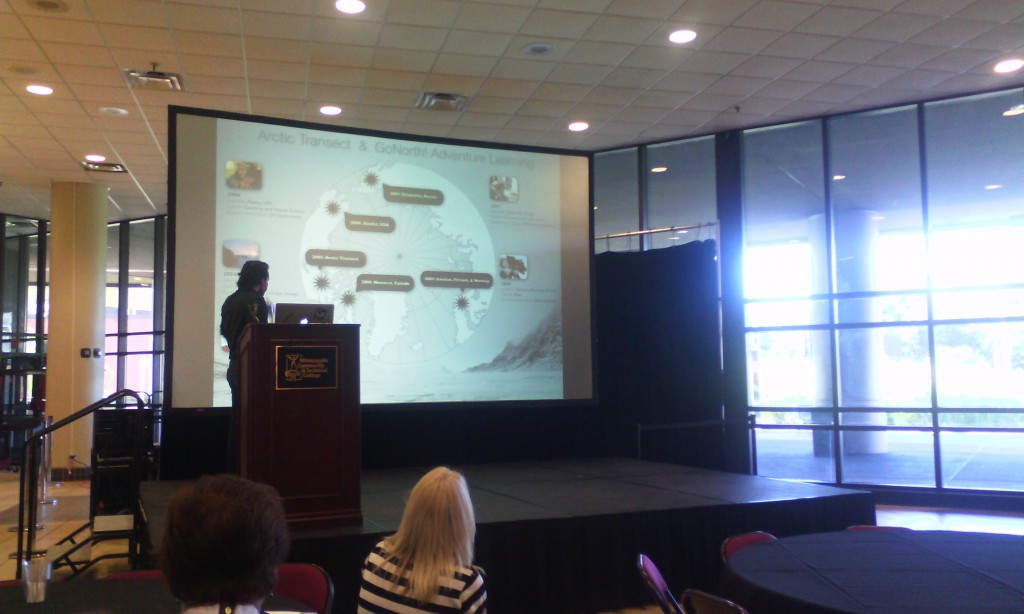
aaron doening
Engagement not completion
Design experience not product
Create change, not simply respond to it
He was a geography teacher : Dimitrina
Experience explore expand. Adventure based how to collaborate in ways we have not collaborated before pedagogical guidelines internet driven
Instructor – content – design
Today: first think is design, content, instructor. So how do we design learning environments is the most important one
Guide learners as designers. Constructivism. Design for meaning. Through the power of the story.
Geotetic design a learning environment learn geography using GIS
Situated movies (student-centered learning)
Grant Earthducation go to the most remote parts of the world to align their education with their culture, instead of what the government is downing as culture
Use of phone: whoever answers instructor’s question first, gets to pose the next question to the rest of the audience.
Design based research
Self-narrative, referencing the experience real world issues in real time
- reference knowledge . knowledge overlap. Technological pedagogical content knowledge.
Geotetic not only how prepare teachers, but desing learning environmwer of the story.
we explore: https://www.we-explore.com/
9.5 design as a learner.
the U Media Lab.
The Changing Earth. App GoX (instagram on steroids. tell their story through the app). How is this different from Google Earth
Raptor Lab (rehabilitate a raptor).
- design experiences
- build trust
- guide learners as designers
- recognize learners as experts
- encourage collaboration
- inspire self narrative
- reference the knowledge domains
- teach for change
- design as learner
adoering@umn.edi chasingseals.com @chasingseals
podcast pontification (audio version of blog self reflections)
Greg Steinke The U
A Digital Story Assignment using WeVideo

WeVideo is the Google response to iMovie cloud
The U is on Google email and thus google drive and all other google tools
The Center for Digital Storytelling. short videos, 3-5 min incorporate photographs with the author narration, reflection
Assignment (verbal directions). process (write a 2 page script, every page is about a minute of video), gather images that support the story; edit the script (rewrite); record audio to the script (use an app on the phone instead of WeVideo), WeVideo can edit the audio recording; edit the story, edit the photos to match the story; YourTube and/or Google+
working with faculty: is the digital story a good fit for your course? two questions: does the course have many writing assignments? does everyone have to do the same type of assignment? do you want to offer choices? do you want your students to share their work outside of the class? to you want to explore opportunities for students to develop 21 century skills?
google communities for sharing
wewideo has a tutorial at Center for Digital Storytelling
students can use the digital story for their eportfolio
the entire exercise is entirely based on mobile devices
time frame: scaffolding options
3d printing products were the tangible result of the project and the digital storytelling just the format to present
Google Drive master folder for the phone images and video; iOS apps: MoviePro, FiLMc Pro, VoiceRecord Pro (including mp3); Android: WeVideo
Storyboard template
Faculty Development Programs: Digital Storytelling Community of Practice
http://it.umn.edu/faculty-development-programs-digital-0
Poster sessions:
Brad Hokanson
http://dha.design.umn.edu/faculty/BHokanson.html
iPAD video kit:

Laurie Conzemius
Critical Thinking

ISTE: http://conference.iste.org/2016/
Joe Lau critical thinking
apps: Popplet blog.popplet.com http://www.popplet.com/ (mindmapping)
into the book: http://reading.ecb.org/
Kahoot – the token system. Polleverywhere https://blog.stcloudstate.edu/ims/2015/05/21/polls-and-surveys-tools-for-education/
Symbaloo https://www.symbaloo.com/home/mix/13eOcK1fiV zotero, easybib, delicious, diigo depending on the grade
youth voices; http://youthvoices.net/ replace social media like teachertube is trying to replace youtube
quandary games in education. https://www.quandarygame.org/ sim city
citizen science alliance http://www.citizensciencealliance.org/
Toontastic https://itunes.apple.com/us/app/toontastic/id404693282?mt=8 now free storytelling
coding and programming: https://www.makewonder.com/robots/dashanddot scratch
Osmo : https://www.playosmo.com/en/ $79.99 + give a set for free Stride principle as a parental involvement
chainlink;
kickword; https://play.google.com/store/apps/details?id=com.makario.wordkick
red herring (four categories) https://play.google.com/store/apps/details?id=com.BlueOxTech.RedHerring&hl=en
http://www.mathplayground.com/logicgames.html
http://www.mathplayground.com/thinkingblocks.html
evaluation:
telestory https://itunes.apple.com/us/app/telestory/id915378506?mt=8
explain everything http://explaineverything.com/
Exploring and Connecting 3D Printing to Teaching and Learning Jason Spartz, Saint Mary’s University of Minnesota
http://pubs.lib.umn.edu/minnesota-elearning-summit/2015/program/23/
http://pubs.lib.umn.edu/cgi/viewcontent.cgi?article=1023&context=minnesota-elearning-summit
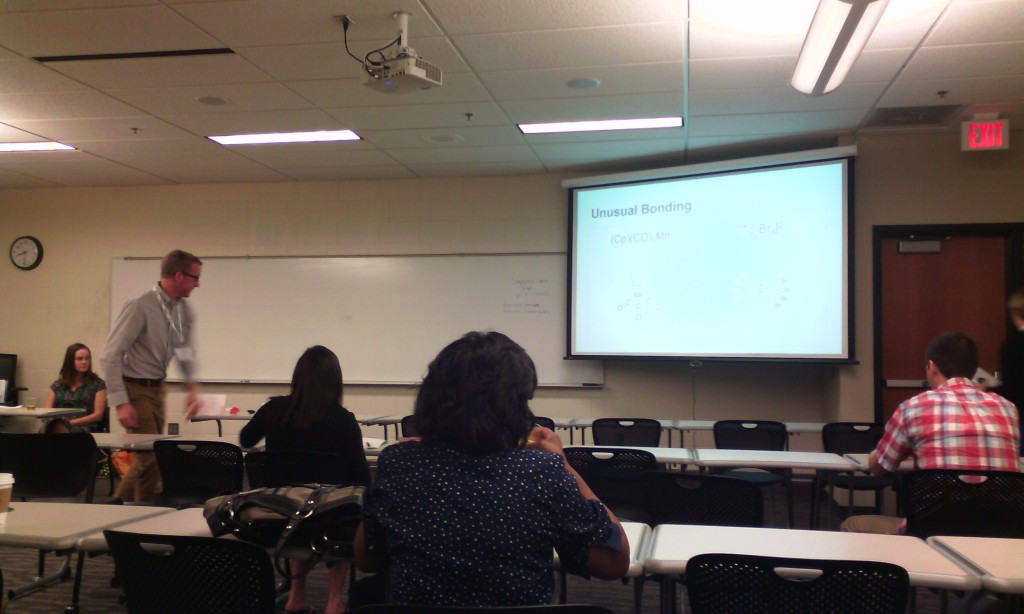
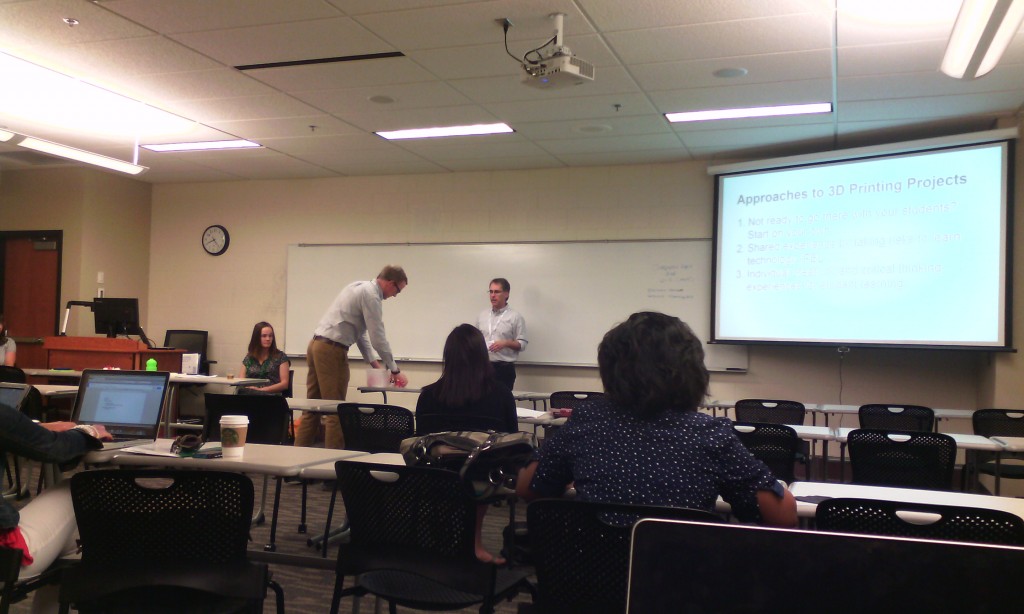
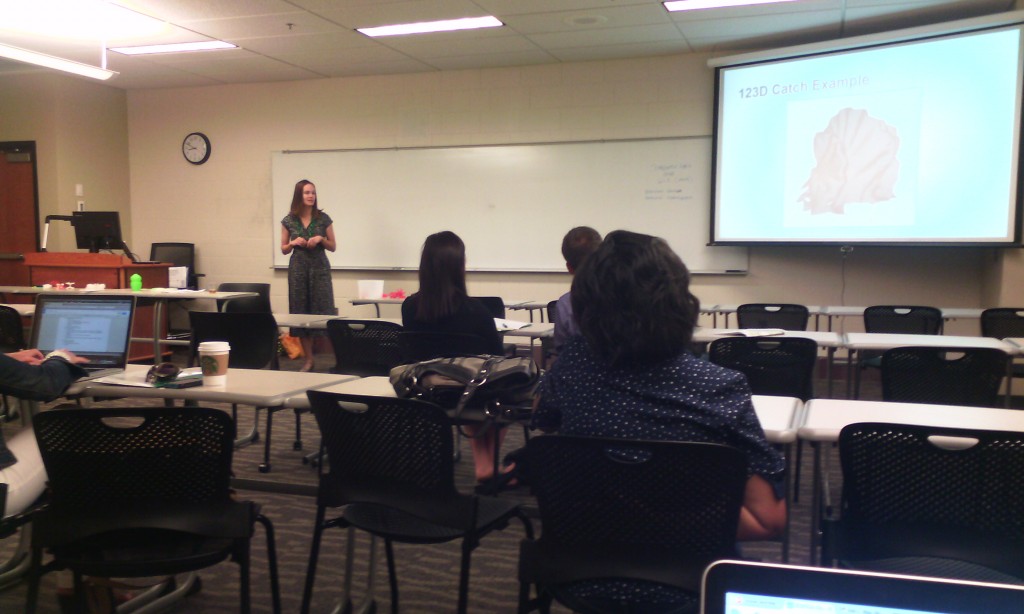
Jason Spartz, Saint Mary’s University of MinnesotaFollow
Lisa Truax, Saint Mary’s University of MinnesotaFollow
Karen Sorvaag, Saint Mary’s University of MinnesotaFollow
Brett Bodsgard, Saint Mary’s University of MinnesotaFollow
chemistry professor. 3D printing with different materials.
what else can be made (e.g. reaction vessel)
printing of atoms
crystalography dbase
Karen: pre-service teachers professor: how to use 3d printers and be comfortable with them. Steve Hoover. Thinkercad and Autodesk123D>
3D academy http://www.team3dacademy.com/index2.html. Pinterest board for3d Printing with resources
Lisa: graphic design. not intuitive. Rhinoceros (not free anymore). 123D strong learning curve. 3d printing will be incorporated in the curriculum. sculpture students and others don’t like fudging on the computer, but Adobe people love it. Some items takes up to 4 hours to print out. when working on the computer is difficult for some students to visualize the dimensionality.
collaborative learning opportunities.
no makerspace or fab lab. additional interest from the theater and business dept. 3d printing is connected to future work skills. new media ecology or media literacy set of skills.
the main presenter: build excitement and interest and gradually step back. how much material goes through and should we charge back. clean and maintenance involved; not too bad. better then a copier. plastic inexpensive. sizes with plastic – $25 and $50. how many project of a spool: depending on the size of the projects but considerable amount. two printers one art dept and one in the faculty dev area.
non profit visually impaired students. how 3d can make difference in special ed.
3d printing lab with access for everybody. ownership brings policy. where housed: neutral place.
only one printer is barely sufficient for faculty to figure out how to use it. purchasing two more if students and curricula to be involved.
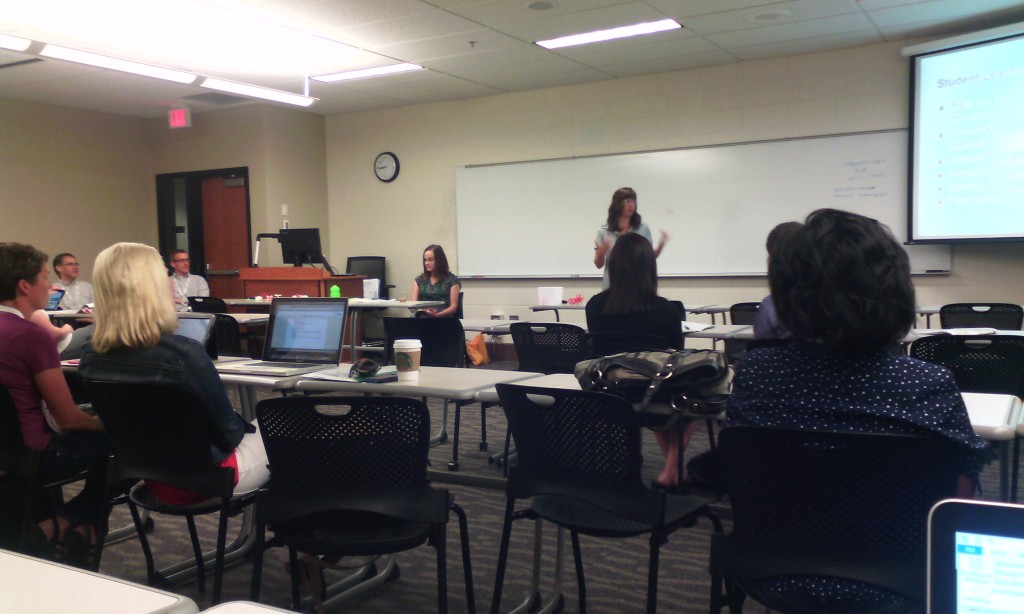



The Balancing Act: Team-Creating an eBook as an Alternative Method for Content Delivery Tom Nechodomu, University of Minnesota

Faculty Created digital stories – google “cultivaitng change series”
student created digital stories –
Susan Andre uses a slide titled “trust” to elucidate how the entire project was enabled. “trust” and “transparency” are sparse currency in the environment I work in. if she is right an ebook ain’t happening anytime soon at my place.
inclining habitat.
students involvement. use stipends. student artists. food for the video interviews. create a community, student centered.
people able to change the book.
copyright process; did you find it cumbersome. copyright permission center.
time span and amount of hours spent: 3-4 months per chapter.
Main speaker
David Wiley. Making Teaching and Learning Awesome with Open
MN Learning Commons
open educational resources
LUMEN
education – sharing feedback, encouragement with students passion about the discipline, yourself
open is not the same as free. free + permissions + copyright permission: 5 r = retain (make and own copies), reuse (use in a wide range of ways), revise (adapt, modify, and improve), remix (combine two or more), redistribute (share with others)
open:
free and unfettered access
perpetual, irrevocable copyright permissions
(look but don’t touch is not open)
tech enables OER permits
traditionally copyright materials on the Internet – not so good ; jet on the road
openly copyright materials on the internet _ yes: jet in the air
permission-less innovation. relatively inexpensive and broad permissions.
intellectual infrastructure of education: learning outcomes/objectives; assessments; textbooks. they are relatively expensive and narrow permissions.
disappearing ink strategies: buyback, rental, ebooks, online subscription
mad, glad, sad, rad: the grumpy cat. student success per dollar
opennetgroup.org/review
change in student learning: replace commercial with open books – small. realign, bigger change. rethink is the large change.
responsibilities:
attribution and meeting other license requirements
thin common cartridge: a way to bring the content to the CMS, but the content remains on the creative commons
disposable assignment: students hate doing them, instructors hate grading them. waste of time and energy
so what?
open education infrastructure: open outcomes, objectives, activities, educational resources
the culture of glued legos must be eradicated. open pedagogy. open credentialing model
summary: don’t settle for “affordable.” improve student outcomes. improve affordability. improve design / academic freedom
links generated from the discussion at my presentation:
> Willard,
>
> The post 29.126 has been niggling at me for days. I originally want to
> reply with a simple observation that the appeal to storytelling is
> cast in such a way to avoid the complications of narration’s relation
> to narrative (the telling and the told; shown and said). But it was
> the theme of “borrowing” from one domain by another that leads me to
> recall a counter-narrative where there is no need to borrow between
> domains since the military-industrial-entertainment complex is one entity.
>
> I contend that fundamental to human interaction is narration:
> attentiveness to how stories are related. Stories are for sorting and
> storing. *Sometimes this soothes paranoia induced by too much
> linearity.*
>
> A while ago (1996), I explored recursivity and narrativity. My
> starting point was the ability to ask questions (and learn from one’s
> bodily reactions). The musings may or may not have military relevance.
> Judge for
> yourselves:
>
> <quote>
>
> Pedagogical situations are sensory. They are also interpersonal.
> Because they are sensory this makes even learning by oneself interpersonal.
> Egocentric speech is like a dialogue between the senses. In
> Vygotsky’s and Luria’s experiments, children placed in problem-solving
> situations that were slightly too difficult for them displayed egocentric speech.
> One could consider these as self-induced metadiscursive moments. The
> self in crisis will disassociate and one’s questionning becomes the
> object of a question.
>
> Not only is the human self as a metabeing both fracturable and
> affiliable in itself, it is also prone to narrativity. That is, the
> human self will project its self-making onto the world in order to
> generate stories from sequences and to break stories into recombinant
> sequences. Its operations on signs are material practices with consequences for world-making.
>
> The fracturable affiliable self calls for reproductive models suitable
> to the interactions of multi-sensate beings, models that render dyads
> dialectical, questionable, answerable. Narrativity understood
> dialectically does not merely mean making sequences or strings of
> events into stories but also stories into things, strung together for
> more stories. From such an understanding, emerge non-dyadic
> narratives of reproduction, narratives where a thing-born transforms
> itself into an event, comes to understand itself as a process.
>
> </quote>
>
> http://homes.chass.utoronto.ca/~lachance/S6D.HTM
>
> Funny to consider that those remarks were based in a consideration of
> language and feedback mechanisms. Make me think that the storytelling
> as “potent form of emotional cueing” may be directed to undesired
> responses such as greater self-reflexivity. And depending on how they
> are parsed, Hollywood films can contribute to undesired responses
> including escape. 🙂
>
> Francois Lachance, Scholar-at-large
> http://www.chass.utoronto.ca/~lachance
>
> to think is often to sort, to store and to shuffle: humble, embodied
> tasks
>
> On Mon, 29 Jun 2015, Humanist Discussion Group wrote:
>
>>
>>
>>
>>
>> Sharon Ghamari-Tabrizi, in “The Convergence of the Pentagon and
>> Hollywood” (Memory Bytes: History, Technology, and Digital Culture, ed.
>> Rabinovitz and Geil, 2004), describes in some detail the adoption by
>> the U.S. military of the entertainment industry’s storytelling
>> techniques implemented by means of simulation. This chapter follows
>> on from her excellent “Simulating the Unthinkable: Gaming Future War
>> in the 1950s and 1960s”, Social Studies of Science 30.2 (2000). In
>> the 2004 piece she describes a U.S. National Research Council
>> workshop in October 1996 at which representatives from film, video
>> game, entertainment and theme-parks came together with those from the
>> Department of Defense, academia and the defense industries. There is
>> much about this convergence that we might productively take an
>> interest in. Let me, however, highlight storytelling in particular.
>>
>> In a military context, Ghamari-Tabrizi points out, skilled
>> storytelling techniques are used to help participants in a VR
>> environment sense that they are in a real environment and behave
>> accordingly. Storytelling functions as a potent form of emotional
>> cueing that would seem to elicit the desired responses. But
>> especially interesting, I think, is the fact that “many conference
>> participants argued that the preferred mode of experiential immersion
>> in electronic media is not the unframed chaos of hypertext, but
>> old-fashioned storytelling.” She quotes Alex Seiden of Industrial
>> Light and Magic (note the date — 1996): “I’ve never seen a CD-ROM
>> that moved me the way a powerful film has. I’ve never visited a Web
>> page with great emotional impact. I contend that linear narrative is
>> the fundamental art form of humankind: the novel, the play, the film… these are the forms that define our cultural experience.”
>>
>> Comments?
>>
>> Yours,
>> WM
>> —
>> Willard McCarty (http://www.mccarty.org.uk/), Professor, Department of
>> Digital Humanities, King’s College London, and Digital Humanities
>> Research Group, University of Western Sydney
Turning Technophobia through Digital Storytelling
http://www.nmc.org/blog/turning-technophobia-through-digital-storytelling/
Enabling Bring Your Own Device
white paper by the Cisco
To help improve understanding of BYOD and its impacts on modern network environments, this white paper will further explore the many differences that exist between corporate and educational approaches to the technology.
In the education space, dealing with non-standard, user-managed devices has been and still remains the norm. Unfortunately, the variety of devices means a multitude of operating systems and software are encountered, with many “standards” being defined. As a result there is little consistency in the device type or the software being installed. Since the device is owned by the student and is a personal resource, it is often difficult or impossible to enforce a policy that prevents users from installing software. In addition, due to the nature of learning as opposed to a corporate environment, it is also difficult to put a restriction on certain classes of software since all may provide a worthwhile educational purpose.
providing a solution that unifies management and deployment polices across both wired and wireless devices is very desirable.
The Internet of Everything (IoE) has spurred a revolution in mobility. Collaboration anywhere, anytime and with any device is quickly becoming the rule instead of the exception. As a result it is now common for students to bring mobile devices such as smartphones, tablets and e-readers into the academic environment to support their educational endeavors.
The infrastructure supporting BYOD no longer has the sole purpose of providing a wireless radio signal within a given area. The focus is now about providing the appropriate bandwidth and quality to accommodate the ever-growing number of devices and ensure that an application provides a good end-user experience. In a sense, applications are now the major driving force behind the continuing evolution of BYOD. For example, a teacher accessing video in the classroom for educational purposes during class hours should have greater priority than a student in the same area accessing a gaming site for recreation.
A state-of-the-art BYOD infrastructure should now be capable of providing more than just generic, general-purpose wireless connectivity. In the classroom environment, the notion of “differentiated access” often resonates with faculty and staff. Once this has been determined, a policy can be applied to the user and their activity on the network.
Granular security can also be intelligently delivered.
Quality of Service (QoS) rate limiting has been available for some time, but now there are newer QoS techniques available.
Location-based services can provide their first interaction with the university. By delivering campus maps and directional information, location-enabled services can enhance the experience of these visitors and provide a positive image to them as well. As a visitor enters a particular building location, information could automatically be provided. In the case of a visiting student, information about the history of a building, departments contained within the building, or other resources could be presented to enhance a guided tour, or provide the perspective student the ability to have a self-directed tour of the campus facilities.
802.11ac Technology (https://en.wikipedia.org/wiki/IEEE_802.11ac)
Software Defined Networking (https://en.wikipedia.org/wiki/Software-defined_networking)
Could Video Games Measure Skills That Tests Can’t Capture?
http://ww2.kqed.org/mindshift/2014/08/11/could-video-games-measure-skills-that-tests-cant-capture/
applying the mechanics of games to the science of psychometrics — the measurement of the mind.
Scholars like James Paul Gee believe video games actually come much closer to capturing the learning process in action than traditional fill-in-the-bubble tests. My note: Duh...
Schwartz’s theory of assessment focuses on choice. He argues that the ultimate goal of education is to create independent thinkers who make good decisions. And so we need assessments that test how students think, not what they happen to know at a given moment.
more on games and gamification in this IMS blog:
https://blog.stcloudstate.edu/ims/?s=gaming
https://blog.stcloudstate.edu/ims/?s=gamification
Digital game-based learning levels up digital literacies
http://thinkspace.csu.edu.au/anotherbyteofknowledge/digital-game-based-learning-levels-up-digital-literacies/
My note: excellent Australian article, which presents a very strong point on digital literacies (metaliteracies, see URL below) from educators (versus library) perspective. Connected with game-based learning, it clearly renders the traditional perspective of information literacy as miniscules and the notion of digital literacy being “information literacy on steroids” as obsolete. It clearly shows that the “xxx-literacies” are clearly not a domain of the librarians and if the librarians do not wised up and allow other faculty who are “not librarians” to equally participate, they might well count with those faculty going on their own (as it is transparent from this article).
connections will be made between digital game-based learning and digital literacies to show that digital game-based learning is a powerful pedagogy that incorporates the elements of digital literacies. Through the adoption of game-based learning, digital literacies can be taught in context. Digital literacies are the skills that connect the learning content (curriculum) and digital games are the platform that these digital literacies can be practised within a meaningful context.
Digital literacies is an umbrella term that includes a combination of literacies – visual literacy, media literacy, collaborative literacy, ICT literacy, information literacy – that are needed to take an active, participatory role in life, now and in the future (Hague & Payton, 2010, p. 2).
Bawden (2008), cites Gilster (1997), who defines digital literacy as “an ability to understand and use information from a variety of digital sources and regard it as literacy in the digital age” (p.18).
Jisc, identify in their Digital Literacy Guide that it is a concept that is contextual and it is not static. Change is imminent as new technologies develop “at breakneck speeds” (Becker, 2011, p. 76), therefore, it can be inferred the digital literacies required to use these new technologies need to be adaptable and flexible to these changes (Haste, 2009).
Cooper, Lockyer & Brown (2013), highlight this plurality by using the term “multiliteracies” which can be understood as synonymous with digital literacies. Cooper et al. (2013), explain multiliteracies is required as a “broader view of literacy” (p. 94), is needed as a result of the diverse range of communications tools, therefore, context is implied. Ng (2012) also highlights this idea that digital literacy is “the multiplicity of literacies associated with the use of digital technologies” (p. 1066). The combination of multiliteracies and technologies would also suggest that multimodality is an important element of digital literacy (McLoughlin, 2011) .
7 elements of digital literacy in their Developing Digital Literacies Guide (2014), which can be seen below.

digital games (Pivec & Pivec, 2011), which can also be called computer games (Whitton, 2011), video games (Turkay, Hoffman, Kinzer, Chantes & Vicari, 2014) or serious games (Arnab et al., 2012) rather than gamification.
Digital game-based learning then is using digital games in the learning environment with the purpose of achieving learning aligned with learning theory.
Cognitive constructivism is a learning theory that game-based learning could be aligned (Orr & McGuinness, 2014; St-Pierre, 2011). This learning theory builds upon the theories of Piaget and Bruner, therefore, an important consideration in the digital game-based classroom would be that choosing games needs to fit the age and level of intellectual development the students are at (St-Pierre, 2011).
A major focus of the socio-constructivist learning theory is that of Vygotsky’s Zone of Proximal Development (St-Pierre, 2011). The learning is designed “just beyond what the learner can do” (Orr & McGuinness, 2014, p. 223) and takes them beyond where their knowledge already exists.
More on digital literacy (metaliteracy) and DGBL in this IMS blog:
https://blog.stcloudstate.edu/ims/2014/11/30/game-based-learning/
https://blog.stcloudstate.edu/ims/?s=gaming
https://blog.stcloudstate.edu/ims/?s=gaming
https://blog.stcloudstate.edu/ims/2015/02/20/digital-literacy-2/
https://blog.stcloudstate.edu/ims/?s=digital+literacy
https://blog.stcloudstate.edu/ims/2014/11/27/reframing-informatioan-literacy-as-a-metaliteracy/
The Cost of an Adjunct
The plight of non-tenured professors is widely known, but what about the impact they have on the students they’re hired to instruct?
http://www.theatlantic.com/education/archive/2015/05/the-cost-of-an-adjunct/394091
When a college contracts ‘adjunctivitis,’ it’s the students who lose
http://www.pbs.org/newshour/making-sense/when-a-college-contracts-adjunctivitis-its-the-students-who-lose/
Here is an “apologetic” article that adjuncts are not that bad for students and learning:
Are Adjunct Professors Bad for Students?
Some doubts about a recent study suggesting that part-time faculty fail to “connect” with students.
http://www.popecenter.org/commentaries/article.html?id=2045
9 Reasons Why Being An Adjunct Faculty Member Is Terrible
http://www.huffingtonpost.com/2013/11/11/adjunct-faculty_n_4255139.html
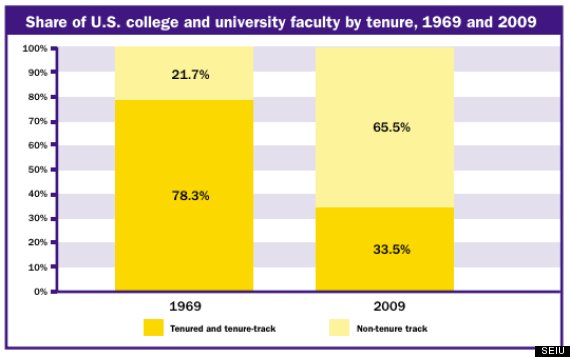

The Adjunct Revolt: How Poor Professors Are Fighting Back
http://www.theatlantic.com/business/archive/2014/04/the-adjunct-professor-crisis/361336/
“Students aren’t getting what they pay for or, if they are, it is because adjuncts themselves are subsidizing their education,” Maria Maisto, president of the adjunct activist group New Faculty Majority, told me. “Adjuncts are donating their time; they are providing it out of pocket.”
The adjunct crisis also restricts the research output of American universities. For adjuncts scrambling between multiple short-term, poorly paid teaching jobs, producing scholarship is a luxury they cannot afford. “We have lost an entire generation of scholarship because of this,”
Adjunct Professor Salary
http://www.payscale.com/research/US/Job=Adjunct_Professor/Salary
The New Old Labor Crisis
Think being an adjunct professor is hard? Try being a black adjunct professor.
http://www.slate.com/articles/life/counter_narrative/2014/01/adjunct_crisis_in_higher_ed_an_all_too_familiar_story_for_black_faculty.html












